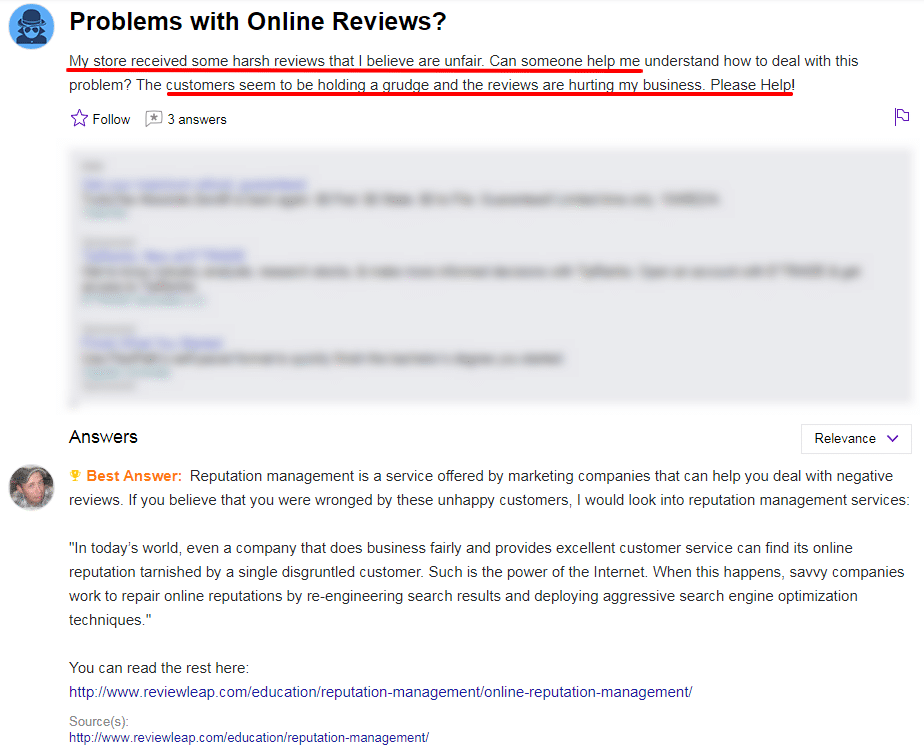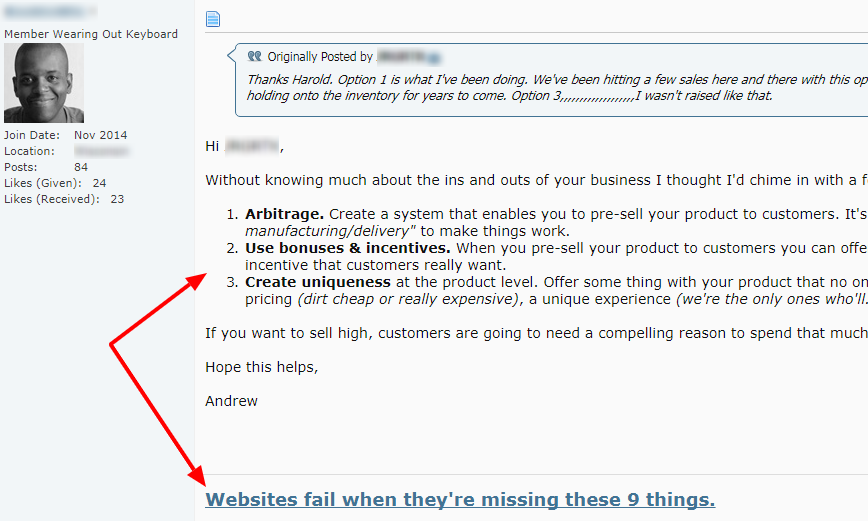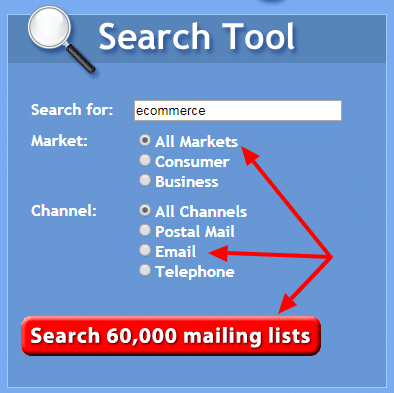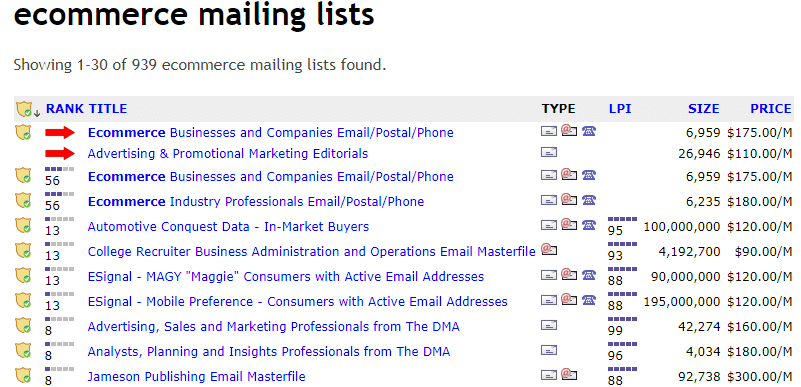Updated 8/26/2019 - 1 new prospecting strategy and updated existing strategies.
Prospecting online review management clients can be an emotional rollercoaster, when it's done wrong.
If you're an agency owner, you're already wearing lots of hats. You're juggling cash flow, sales, marketing, and client work.
There isn't enough of you to go around.
So you spend your days running from one fire to the next. When new clients come in, it's all hands on deck. You divert your attention away from prospecting to agreements, project management, meetings, etc. Here's the part that makes everything more difficult.
You need to do that.
Do you spend time on marketing your own agency to bring in new customers? Do you help your team manage and complete projects? Or are you the customer service point of contact in case something goes wrong?
You won't have a business if you ignore these details.
But you don't have enough time to keep your client roster full with an ongoing waitlist when you are loaded up. How do you generate a steady supply of leads and maximize the time you have to work on your business?
- Strategy #1: Mining forum posts
- Strategy #2: Pitching businesses with poor review portfolios
- Strategy #3: Use email advertising as a prospecting tool
- Strategy #4: Target business groups
Your business won't survive without a system
Is having a system an important thing to have? Let's look at two marketing consultants for the answer.
Rich wants review management clients so he...
1. Writes a book
2. Guest posts on high profile sites
3. Speaks regularly at entrepreneur and business conferences
4. Creates helpful tools and resources clients can use right away
5. Offers consulting to clients who need more help
Jason wants consulting clients so he...
1. Starts a consulting business
2. Buys a list of prospects from a vendor
3. Starts cold calling, sends out cold emails
4. Gets a few clients but eventually stops marketing to take care of his clients
See the difference?
Rich uses a system. That system gives him the leverage he needs to flood his business with leads. His marketing isn't dependent on him personally. It's dependent on his system. The better his system performs the more clients he receives.
Marketing gets easier for Rich and harder for Jason.
Rich, due to his thought leadership and useful content, is viewed as an expert. He works hard to create value for clients, but he does it in a way that removes him from the process. Jason is seen as a needy wannabe, a bottom feeder that pesters, begs and annoys prospects for their attention. He has no audience, no leverage and gets zero respect.
Does your prospecting system have the right ingredients?
Your prospecting system needs a few distinct ingredients to work properly. Prospecting becomes easy with the right ingredients. Agencies and consultants frequently run into trouble because their prospecting system is incomplete.
For example, agencies often attempt to win clients with attraction alone. If they win they pay a steep price (e.g. discounting, loss of respect, bad projects) and often struggle to keep them.
These ingredients fit into three distinct groups.
Attraction
- Education. It’s the key ingredient that attracts new clients to you. Teach clients something surprising or new, and you immediately have their interest. Captivate them with emotion, and you win their undivided attention.
- Resources. Lead magnets, tools, checklists, ebooks and guides are all under the category of resources. Resources, when offered in exchange for an email address, begin the relationship. A well-crafted resource can be positioned as an irresistible offer used to build a relationship.
- Entertainment. Fascinate, delight or inspire your prospects and they’ll follow you to hear more of what you have to say. Entertain prospects with stories, songs, games and ideas. Entertainment, while important, shouldn’t come at the expense of value. Value first, entertainment second.
- Engagement. Your prospects may push back on your ideas. They’ll challenge you, ask questions, give you feedback. Treat each engagement as a test. As if prospects are evaluating you, your character and your business. Respond with kindness and respect at all times.
Conversion
- Authority. Why should prospects listen to you? What makes your voice significant and worthy of attention? What signals confirm your ability to help and serve them?
- Credibility. Your banker may have authority when it comes to banking and finance, but that doesn’t mean you trust them explicitly as people.
- Objections. Fear permeates transactions between two people who don’t know each other. What if you fail to produce results? I don’t think your process will work. Who do you have working for you?
- Information. What’s your refund policy? How do you do what you say you’ll do? How long before I see progress? Do you outsource work to independent contractors? Will you be the one to service my account?
Consumption
- Understanding. Do clients understand what they’ve purchased? Are they experiencing any buyer’s remorse? Are they aware of what they can do with your product or service? If customers understand what you’re giving them, what they can accomplish with your product or service, they’re far more likely to use it.
- Usage. Are your clients using your service? Are they taking advantage of your reports? The more a client consumes your product or service, the more they’ll buy. Getting clients to use your product or service is one of the hardest parts of selling, but it’s also one of the most vital.
- Support. Are you there to help them when something goes wrong, or do they have to figure things out on their own? Are you helpful and kind when they reach out to you for help, or are you irritated, annoyed and eager to get them off the phone or chat?
- Growth. Are you proactively looking for ways to help your clients? Are you providing them with consistent value (outside of your content marketing efforts) on a consistent basis? The more you do to help your clients grow their business, the more likely they are to stay with you.
Strategy #1: Mining forum posts
Your prospects are on forums. They're asking detailed questions about their business. A customer has just posted a nasty review in response to a job well done. What do I do? I need reviews to launch my product or service, but I'm a nobody. How do I make that happen?
Forums are low hanging fruit.
I use the word "forum" as a catchall term to describe - forums, Q&A, niche sites, websites with lively comments, etc. It's shorthand for places where prospects ask questions.
Here's a short list.

There are hundreds of forums to choose from and plenty of prospects that need help. Here's where most marketers go wrong. They immediately get to work. They post constantly, doing everything they can to help prospects. They fail to gain traction, burn out quickly then declare that forum posting doesn't work.
There's a reason it doesn't work.
They focused exclusively on attraction but neglected conversion. If you want to make it work you'll need to direct prospects to a resource - a lead magnet, video, tool, ebook, guide, etc. Something that's sure to get their attention. Then, you place a brief link to that resource, inviting prospects to start a relationship.
Like this:

This conversion element is the part most marketers miss. They add too many links to their post, don't add any links, or the link they've added is irrelevant.

These forum posts compound over time. The more visible you are the easier it is to attract prospects, leads and sales. So you need to be consistent over time.
Most people speak faster than they type so tools like Dragon Naturally Speaking help you scale this strategy so you're better able to maximize your time.
Strategy #2: Pitching businesses with poor review portfolios
Most businesses have poor review portfolios.
That's bad news for them but it's very good news for you. With the right approach you can attract clients to your business. But, only if it's handled properly.
To do that you'll need a few things:
1. An irresistible offer. Your offer can either be positive (Using this checklist can increase your positive reviews by 64 percent. This will increase your conversion rate by a projected 33 percent) or negative (This checklist shows you the customers who are more likely to write a negative review about you). The offer varies from niche to niche so you'll want to do a bit of research to identify the offer they'd be most interested in. This offer is ideally low risk, easy to use, and free of charge. Give value first before you ask for anything.
2. Authority and credibility. Prospects will dig into your background . They'll search for your social media profiles, look for media mentions - anything they can find to verify your identity. If there are any red flags they're gone forever so it's important to take care of any potential problems (i.e. negative reviews about your business) first.
3. A sales funnel. Your irresistible offer should lead clients to the next step in your sales process. Is that an email autoresponder series? A free trial? Download or free consultation? Build the next steps into your irresistible offer.
Okay, you're all set.
It's time to pitch new clients. Choose an industry or vertical (e.g. restaurants, doctors, attorneys, etc.) to target first. Next, make a list of the review sites your prospects frequent (e.g. Yelp, Avvo for lawyers, ZocDoc for healthcare, full list here: etc.). Spend some time browsing through these sites searching for potential prospects.
You're looking for prospects who:
- Fit the demographics and psychographics of your ideal customer
- Have the budget to spend on review management services
- Are reasonably healthy people (e.g. no abusive, toxic or reckless behavior)
- Have a poor review portfolio
A poor review portfolio could be:
- No reviews
- Too many negative reviews
- Not enough positive reviews
- Too little reviews (across multiple review sites (i.e. lots of Avvo and Facebook reviews but no Google reviews)
- Poor reviews from the wrong customer
Your irresistible offer should be tailored to the specific problem you're trying to solve. It also needs to be positioned properly so prospects understand the seriousness of their problem. Don't manufacturer doom and gloom. Instead, do your best to be upfront and candid with prospects.
Give them a clear idea on the consequences and problems they face.
You'll want to do some digging to find their email address. Free browser plugins like Clearbit Connect makes it easy to find an email address for each of the prospects in your list.
Next, craft your pitch. You'll want to make sure your email meets the following criteria:
- Your email is easy, simple and clear
- Your email is short and to the point
- The risk to them is minimized, the risk to you is present
- You describe the problem, then present your irresistible offer as the solution
- You highlight quick wins you’ll be able to provide using specific, value-driven language
Your pitch could be a little something like this.
Hi [Prospect Name],
My name is [Your Name], I'm the co-founder of [Your Agency].
I noticed that your negative reviews from unhappy customers increased by 40%. I've got a free checklist your staff can use to reduce negative reviews by 90%. It's free and there's no opt-in required.
Interested?
[Your Name]It could take a more aggressive approach, like this:
Hi [Prospect Name],
My name is [Your Name]. I'm the co-founder of [Your Agency].
I noticed your Yelp profile has received 40 negative reviews in the last month. Those negative reviews are costing you customers. I have a free tool you can use to identify customers who are about to write a negative review about you. You can also use this tool to reduce the damage from these
reviews.
It won't cost you a dime.
Interested?
[Your Name]Your irresistible offer could be anything. As long as it solves a client's problem, it should work! Once prospects respond, you make good on your irresistible offer. Do your best to underpromise and overdeliver.
Once they've shown interest, you craft a follow up offer, like this:
Hi [Prospect Name],
I'm really glad you were able to use our free tool to catch those negative reviews!
It's awesome that your customers were so open with you. I noticed that you haven't responded to the negative reviews on Yelp. I've got this template kit that you can use to reach out to them.
Other clients used these templates to turn a 1 star review into a 5 star review. That's free as well.
Interested?
[Your Name]You'll want to set a precedent for your relationship (i.e. give three times more than you take). This quickly teaches prospects that
a.) you know their business
b.) you're focused on results and
c.) you're trustworthy because you deliver results consistently.
Strategy #3: Use email advertising as a prospecting tool
The best traffic you can get comes from sponsoring other people's newsletters.
It's an excellent way to rapidly build an email list and a simple way to generate sales and revenue. It's also a great way to lower your cost per lead.
It's pretty straightforward.
You pay to advertise on other people's email lists. The more relevant your offer to the list you're targeting, the easier it is to generate traffic, leads, and sales.
But how?
You could either find promotional opportunities on a personal level by reaching out to local organizations and asking about their email sponsorship opportunities. You could go more national with a curated email sponsorship platform like Paved. Or you could use a service that shares access to lists.
Cue Nextmark.
Nextmark has a database of 60,000 mailing lists, each with their own subscriber counts. If you know the niche or segment you're looking to target, you're ready to get started. Let's say we're looking for more review management clients in the eCommerce niche.

Are there any mailing lists we can access? A quick search shows there are quite a few lists focusing on ecommerce exclusively.

Click through for more details and get more detailed info. The size of the list, formats, channels (e.g. phone, email or mailing lists) and more. You'll want to save the mailing lists you're interested in. Reach out to Nextmark to get the process started when you have a finalized listing of mailing lists you want.
Follow their guidelines for the ad formats that are allowed for each list. Then create an ad that's appropriate for each. Test each source to identify winners then increase your spending as needed.
You'll want to lead with an irresistible offer. Your irresistible offer should accomplish several things:
- Fill your email list with qualified leads
- Establish your 80/20 offer, the offer that generates most of your subscribes, leads, sales, etc.
- Disqualify unqualified customers
Once you've identified a winner (A quality source that delivers quality traffic), you can ramp up your spending. It's important to note that you'll need to have a marketing funnel that's ready to go (attraction + conversion + consumption).
The more prepared you are the better your ads will perform.
You'll still need to be involved, at first. You'll want to make sure your prospecting system is stable, healthy and working as intended. You can remove yourself completely once you're comfortable you know what works. Here's the amazing part.
These strategies give you leverage.
With a single message you're able to reach thousands, possibly millions of people. Your prospecting system makes it easy to find clients for your review management business.
Strategy #4: Target business groups
Businesses owners tend to congregate in groups. These groups generally focus on improving a specific area, solving a specific problem or meeting a specific need (e.g., finding contact info). Business owners bring their problem to these groups, hoping that someone in the community will help them fix their problem.
It tends to be hit or miss.
Maybe these entrepreneurs will find a solution to their problem, but they'll probably waste their time on a generic solution to their complex problem.
Not good.
That's where you come in. With the right structure, you'll be able to generate a steady supply of leads, far more than you can handle. Here's how you do it.
Step 1 - Create a list of directories
You'll want to curate a list of business directories. These directories can be online or offline, niche, general or specialized groups. Here's a shortlist to get you started.
Niche/specialized groups
- Toastmasters. A group that helps members improve their communication and public speaking skills.
- IABC. The International Association of Business Communicators is similar to Toastmasters and focuses on helping individuals improve their business communication skills.
- BNI is the world’s largest business networking organization and referral organization.
General groups
- Meetups enable you to attend local events and participate in groups.
- Chamber of Commerce. Your local chamber is a fantastic way to identify and establish insider connections in your community.
- Rotary clubs bring businesses, influencers and leaders together to exchange ideas, and provide mutual benefit to themselves and their community.
There's a good amount of overlap here, but the good news is you'll able to find the businesses and contact info you need to prospect.
Directories
At this point, you're ready for the next step.
Step 2. Pitch your irresistible offer
In our example, we're going to use a 5-day proof of concept pitch. In our pitch, we're going to approach clients with an irresistible offer where we promise to produce amazing reviews in five days or less. Here's a replay of that webinar if you'd like a detailed look at how that works.
Here's a cold email you can use to pitch prospects.
Subject: [Prospect Name], [Reviewer] said some nasty things about [Prospect Business Name]
Hi [Prospect Name],
Can we send you [#] glowing reviews in five days?
My name is [Your Name], I'm the [Title] at [Company]. I see that you've just received some nasty negative reviews from [Reviewer].
They said you [direct quote from review].
Brutal.
These reviews are already visible in Google. The fix is easy. I want to send you [#] amazing, five-star reviews in five days to counteract their negative review and help you bring in more business.
It's free for you.
I have enough time and resources to focus on [#] businesses. No obligation or upfront payment required.
Interested?
[Your Name]Here's what's happening in this pitch.
1. We use their name to grab their attention. This works best if you've done the upfront work to identify the right point of contact and you have their email address. It's powerful because it shows that you've done your homework.
2. We keep their attention with reviews. You're competing with thousands of other people who want their attention. Using their negative review as a hook keeps them focused on your message.
3. Direct quotes amplify the problem. You aren't negative for the sake of being negative. You're telling these prospects they have an urgent problem that you can fix in five days or less.
4. Irresistible offer hook. You promise these prospects a specific number of five-star reviews in five days to counteract this negative review. You're going to have to hustle but doing so, means you're far more likely to win a lucrative contract with these prospects.
5. You're providing links to each of these bracketed details. Your name links to your LinkedIn profile. Your company name links to your website and reviewer links to the specific, negative review that you are quoting.
6. Urgency triggers help you close the sale. This isn't a hard sell, but it's also not available indefinitely. You have limits on the number of people, campaigns you can take on. Passing those limits on to your prospects increases the likelihood of them hearing you out.
Still with me so far?
Let's do some role-playing. Imagine you're targeting a restaurant and you decide to focus your attention on Yelp. You identify a local fast food restaurant that's in bad shape.

There's a significant opportunity here. Using the pitch above, we can pursue businesses with no reviews, poor reviews or an imbalanced review portfolio.
Step 3. Repeated upsells
You may knock things out of the park for your prospect. Maybe you produce 25, five-star reviews, across several review platforms, in three days. Your prospect is delighted.
They're still not ready for a 12-month contract.
No problem. That's what repeated upsells are for. Here's a list of pitches you can use to increase the length and breadth of your contract systematically. It's a straightforward way to earn a long term contract with each of your clients.
1. Five-day proof-of-concept
4. Quarterly campaign
5. 12-month campaign
Can you see what's happening?
We're leapfrogging our way into more profitable contracts with each of our clients. It's a no-brainer for clients, as long as you continue to deliver exceptional results.
It's that simple.
How do you generate the volume of demand you need to supply your agency with the consistent cash flow and growth you need? You set a daily prospecting goal. This doesn't need to be overly ambitious, either. It's actually better if you set the bar low to begin with.
If you pitch:
- One prospect per day, that’s 30 pitches per month
- Five prospects per day, that’s 150 pitches per month
- Ten prospects per day, that’s 300 pitches per month
- Twenty prospects per day, that’s 600 pitches per month
Spamming isn't the way to go.
If you're looking for prospecting stability, you'll want to focus your time and attention on quality prospects. Define your ideal client ahead of time. Then, focus your attention on finding the prospects who meet your set criteria. That's how you create prospecting stability.
Prospecting doesn't have to be an emotional rollercoaster
Your business should be filled to overflowing with leads. You should have a steady supply of amazing and responsive clients.
It's yours, with the right strategy.
Prospecting online review management clients shouldn't depend on you. It should depend on a system. With the right system and a clear strategy, your pipeline will be bursting. When a client finally comes along, they'll notice your confidence. They'll notice your ability to get things done. They'll pay premium pricing and fight for your attention, doing their best to earn your business. Consistent leads without the ups and downs.
About the Author
Andrew McDermott
Andrew McDermott is the co-founder of HooktoWin. He shows entrepreneurs how to attract and win new customers.









